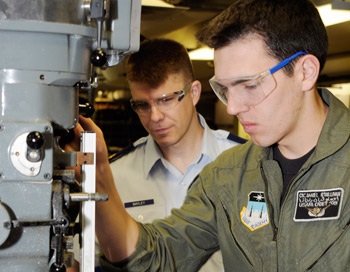March: Vision Safety Month
Vision plays an important role in our lives. We use it every day from the moment we wake up until we’re ready to sleep. The National Institute for Occupational Safety and Health (NIOSH) reports: Every day about 2,000 U.S. workers sustain job-related eye injuries that require medical treatment. In recognition of Vision Safety Month, CP Lab Safety would like to reflect on the most common types of eye injuries in the workplace, OSHA requirements for vision safety and the best way to be compliant and safe.

The most common workplace eye hazards include projectiles (dust, concrete, metal, wood and other particles), chemicals (splashes and fumes), radiation (visible light, ultraviolet radiation, heat or infrared and lasers) and bloodborne pathogens (hepatitis or HIV). Construction, manufacturing and chemistry (laboratory science) are all high risk environments where a number of different elements can have an adverse effect on vision health. The most frequent eye injuries in a workplace are caused by chemicals or foreign objects in the eye and cuts or scrapes on the cornea. The two main reasons workers experience eye injuries are:
1.They were not wearing eye protection
2.They were wearing the wrong kind of protection for the task at hand
The Occupational Safety and Health Administration (OSHA) requires workers to use eye and face protection whenever there is a reasonable probability of injury that could be prevented. Safety experts and eye doctors believe the right eye protection can prevent up to 90% of these eye injuries. However, the type of safety eye protection recommended changes on the type of work environment. OSHA requires the following for each scenario:
- If there are particles, flying objects or dust, you must have glasses with side protection (side shields)
- If there are chemicals, you must wear goggles
- If you are near hazardous radiation you must use special-purpose safety glasses, goggles, face shields or helmets designed for the specific task
 The four most common types of eye
protection are nonpresciption and prescription safety glasses, goggles, face
shields and helmets with shields. Eyewear lenses are available in plastic,
polycarbonate, and Trivex. Although all
three types must meet or exceed OSHA requirements, polycarbonate lenses provide
the highest level of protection from impact.
Eyewear protection must be maintained as they can become scratched or
dirty which can contribute to more workplace accidents.
The four most common types of eye
protection are nonpresciption and prescription safety glasses, goggles, face
shields and helmets with shields. Eyewear lenses are available in plastic,
polycarbonate, and Trivex. Although all
three types must meet or exceed OSHA requirements, polycarbonate lenses provide
the highest level of protection from impact.
Eyewear protection must be maintained as they can become scratched or
dirty which can contribute to more workplace accidents.
It’s important to note that even if the proper eyewear is worn, eye injuries can still occur. Knowledge of first aid in the case of an eye injury should be taught to each employee as part of their safety training. Eyewash stations are a must for any environment where chemicals are used – If chemicals get in your eye you must immediately flush your eye with water for at least 15 minutes and seek medical attention after doing so.
CP Lab Safety provides safety products mentioned above at www.cplabsafety.com, including eyewear and eyewash stations, as well as first aid. Our safety glasses feature polycarbonate lenses that specifically meet ANSI Z87+ requirements to provide the maximum protection.
Take a moment to reflect on the daily hazards in your environment. Think about the last review of your personal safety equipment. It may be time to re-evaluate your supplies to ensure you have everything you need to be safe, healthy and compliant.
Recent Posts
-
Safety First: Choosing the Right PPE for Your Laboratory
Are you aware that over 20,000 workplace injuries occur annually i …1st Oct 2025 -
The Future of Lab Supplies: Trends You Can't Ignore
As laboratories across various industries evolve, the demand for i …29th Sep 2025 -
Ergonomics in the Lab: Choosing Equipment for Comfort
In the fast-paced world of laboratory work, comfort should not be …15th Sep 2025
